Waste Disposal in Mattress Collection
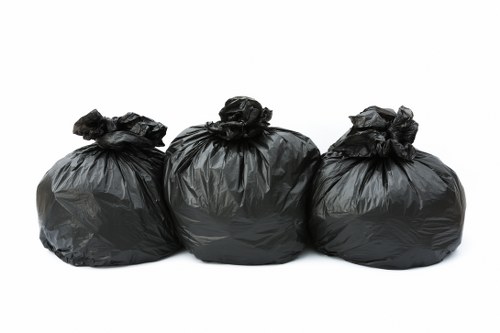
Proper mattress disposal is a critical aspect of waste management that ensures environmental sustainability and public health. As mattresses reach the end of their usable life, finding responsible ways to dispose of them becomes essential. This article delves into the various methods of mattress waste disposal, the environmental impacts, and best practices for effective mattress collection.
With increasing awareness about environmental conservation, individuals and businesses alike are seeking eco-friendly solutions for mattress disposal. Improper disposal not only poses health hazards but also contributes to landfill overcrowding, making it imperative to adopt sustainable practices.
Understanding the complexities of mattress waste management can help consumers make informed decisions, reduce their carbon footprint, and support recycling initiatives that aim to minimize waste.
Importance of Proper Mattress Disposal
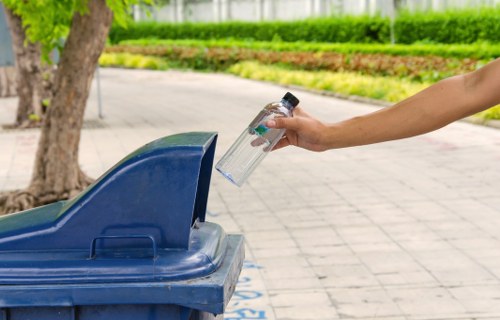
Mattresses are bulky items that take up significant space in landfills. By opting for proper mattress disposal methods, we can reduce the environmental burden and promote recycling. Improper disposal can lead to the release of harmful chemicals and gases, adversely affecting air and soil quality.
Additionally, responsible mattress disposal supports public health by eliminating potential breeding grounds for pests and preventing the spread of allergens. This ensures cleaner and safer living environments for communities.
Moreover, recycling mattresses conserves valuable resources by reclaiming materials such as steel, foam, and fabric, which can be repurposed for new products, thereby reducing the demand for raw materials.
Environmental Benefits of Recycling
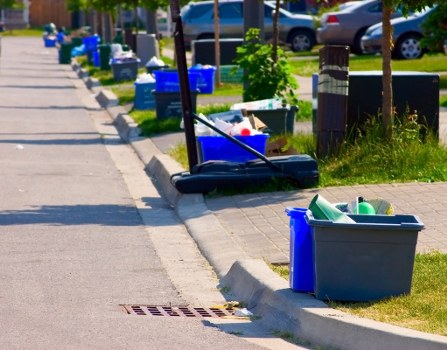
Recycling mattresses significantly lowers the carbon footprint associated with their disposal. It reduces the need for new raw materials, thus conserving natural resources and decreasing energy consumption during manufacturing processes.
Moreover, recycling diminishes greenhouse gas emissions by diverting mattresses from landfills, where they would decompose and release methane—a potent greenhouse gas—into the atmosphere.
Furthermore, recycling initiatives create a circular economy where materials are continuously reused, fostering sustainable industrial practices and reducing overall waste production.
Health and Safety Considerations
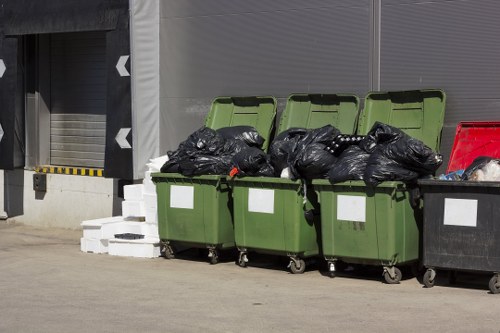
Discarded mattresses can become breeding grounds for bacteria, mold, and insects, posing significant health risks. By ensuring proper disposal, we mitigate these hazards, promoting healthier living conditions.
Proper mattress collection also ensures that hazardous materials used in manufacturing, such as flame retardants and adhesives, are handled safely, preventing them from contaminating the environment and harming human health.
Additionally, professional mattress disposal services adhere to safety protocols, ensuring that the removal and transportation processes do not expose workers or the public to potential dangers.
Methods of Mattress Disposal
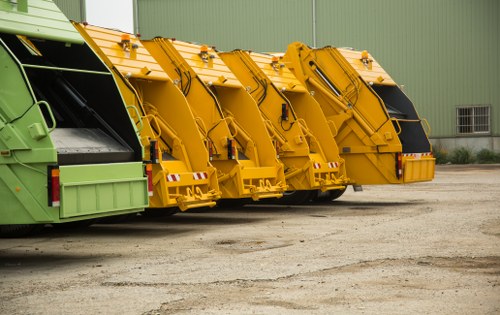
There are several methods available for mattress disposal, each with its own set of advantages and considerations. Choosing the right method depends on factors such as the mattress's condition, local regulations, and environmental impact.
Understanding the available options empowers consumers to make choices that align with their values and promote sustainable practices.
Below are the primary methods of mattress disposal:
Recycling Mattress Materials

Recycling involves breaking down mattresses into their component materials, such as steel springs, foam, and fabric. These materials are then processed and repurposed for use in new products, reducing the need for virgin resources.
- Steel Recycling: Springs and metal frames can be melted down and reused in manufacturing new steel products.
- Foam Recycling: Foam materials can be transformed into carpet underlay or used in automotive seating.
- Fabric Recycling: Textiles from mattresses can be repurposed for use in insulation or as material for new mattresses.
Recycling not only conserves resources but also reduces the environmental impact associated with manufacturing and disposal.
Donating Usable Mattresses

Mattresses that are still in good condition can be donated to charitable organizations, shelters, or community centers. This option not only promotes sustainability but also supports those in need.
However, it's crucial to ensure that the donated mattresses meet health and safety standards, as used mattresses can carry allergens, pests, and other contaminants.
Before donating, consider the following:
- Inspect the mattress for any damages or stains.
- Clean the mattress thoroughly to eliminate any potential health hazards.
- Verify the receiving organization's guidelines for donations.
Responsible Landfilling

When recycling or donation are not viable options, responsible landfilling becomes the alternative. This involves disposing of mattresses in designated landfill sites that adhere to environmental regulations.
- Environmental Compliance: Ensure the landfill follows standards that prevent contamination of soil and water sources.
- Decomposition Management: Proper management of decomposing mattresses minimizes the release of harmful gases like methane.
- Space Efficiency: Landfills should utilize space efficiently to reduce environmental impact and prolong their usability.
While landfilling is less desirable, adhering to best practices can mitigate its environmental footprint.
Environmental Impact of Mattress Waste

The disposal of mattresses has significant environmental implications. As one of the furniture items with the longest useful life, mattresses accumulate in landfills over time, contributing to environmental degradation.
Key environmental impacts include:
- Landfill Space Consumption: Mattresses occupy substantial space in landfills, reducing the capacity for other waste materials.
- Resource Waste: Discarding mattresses leads to the loss of valuable materials that could otherwise be recycled and reused.
- Pollution: Decomposing mattresses can release harmful substances into the environment, affecting ecosystems and human health.
Addressing these impacts through effective mattress waste disposal strategies is crucial for environmental conservation.
How to Choose a Mattress Collection Service

Selecting a reliable mattress collection service is essential for ensuring responsible disposal. A reputable service should prioritize sustainability, adhere to regulations, and provide convenient solutions for consumers.
When evaluating mattress collection services, consider the following factors:
- Recycling Practices: Ensure the service commits to recycling materials and reducing landfill waste.
- Service Coverage: Check if the service operates in your area and offers flexible scheduling options.
- Cost: Compare pricing structures to find a service that fits your budget without compromising on quality.
- Customer Reviews: Look for feedback from previous customers to gauge the service's reliability and professionalism.
Choosing the right mattress collection service contributes to effective waste management and environmental sustainability.
Evaluating Recycling Practices

A vital aspect of selecting a mattress collection service is assessing their commitment to recycling. Services that prioritize recycling ensure that materials are diverted from landfills and repurposed for new uses.
Ask the following questions:
- What percentage of the mattress materials are recycled?
- What recycling processes are employed?
- Are the recycling facilities certified and compliant with environmental regulations?
Transparency in recycling practices indicates a service's dedication to environmental responsibility.
Assessing Service Reliability

Reliable mattress collection services offer prompt and efficient removal, minimizing inconvenience for consumers. Assessing reliability involves reviewing their track record, availability, and responsiveness to customer inquiries.
Consider the following:
- Do they offer same-day or next-day removal options?
- How easy is it to schedule a pickup?
- Are they responsive to customer feedback and concerns?
Choosing a dependable service ensures a smooth and hassle-free mattress disposal experience.
Benefits of Professional Mattress Collection

Engaging professional mattress collection services offers numerous advantages beyond simple disposal. These benefits encompass environmental, economic, and practical aspects.
Key benefits include:
- Convenience: Professional services handle all aspects of disposal, saving time and effort for consumers.
- Environmental Responsibility: Experts ensure that mattresses are disposed of or recycled in eco-friendly manners, reducing ecological impact.
- Compliance: Professional services adhere to local regulations, avoiding potential legal issues associated with improper disposal.
- Safety: Proper handling of mattresses prevents physical injuries and exposure to hazardous materials.
These benefits make professional mattress collection a smart choice for individuals and businesses seeking effective waste management solutions.
Steps to Properly Dispose of Your Old Mattress

Proper disposal of an old mattress involves several steps to ensure it is handled responsibly. Following these steps can aid in minimizing environmental impact and promoting sustainability.
The disposal process typically includes the following stages:
- Assessment: Evaluate the condition of the mattress to determine the appropriate disposal method—recycling, donation, or landfilling.
- Preparation: Clean the mattress to remove any stains, pests, or contaminants, especially if considering donation.
- Scheduling: Arrange for pickup with a professional mattress collection service that aligns with your disposal preferences.
- Transportation: Ensure the mattress is safely transported to the designated facility, adhering to safety protocols.
- Final Disposal: Depending on the chosen method, the mattress is either recycled, donated, or responsibly landfilled.
By following these steps, individuals can contribute to effective mattress waste management and environmental preservation.

In addition to the steps mentioned, consumers should stay informed about local regulations and disposal guidelines to ensure compliance. Engaging with local authorities or waste management organizations can provide valuable insights into the best practices for mattress disposal.
Moreover, considering the longevity and environmental impact of mattresses during the initial purchase can lead to more sustainable consumption patterns. Opting for mattresses made from eco-friendly materials or those designed for easier recycling can further enhance sustainability efforts.
Ultimately, responsible mattress disposal is a collective effort that benefits individuals, communities, and the planet as a whole.
Innovative Solutions in Mattress Waste Management

The field of mattress waste management is evolving with innovative solutions aimed at enhancing recycling efficiency and reducing environmental impact. Technological advancements play a pivotal role in optimizing the disposal and recycling processes.
- Automated Disassembly: Machines designed to separate mattress components quickly and efficiently, facilitating higher recycling rates.
- Material Innovation: Development of new materials that are easier to recycle and have a lower environmental footprint.
- Circular Economy Models: Business models that encourage the continuous reuse and recycling of materials, minimizing waste generation.
Embracing these innovations can significantly improve the sustainability of mattress disposal practices and contribute to a more environmentally friendly future.
Advanced Recycling Technologies

Modern recycling technologies have revolutionized the way mattresses are processed, making recycling more efficient and cost-effective. These technologies enable the separation of various materials, ensuring that each component is recycled appropriately.
For instance, advanced shredding machines can break down mattresses into smaller pieces, allowing for easier sorting and recycling of individual materials like metal springs, foam, and textiles.
Additionally, chemical recycling processes can convert complex materials into basic chemicals, which can then be used to manufacture new products, closing the loop in the recycling cycle.
Eco-Friendly Mattress Designs

Manufacturers are increasingly aware of the environmental impact of mattresses and are designing products with sustainability in mind. Eco-friendly mattress designs incorporate materials that are easier to recycle and minimize the use of hazardous substances.
Features of eco-friendly mattresses include:
- Use of natural or recycled materials such as organic cotton, wool, and recycled steel.
- Elimination of harmful flame retardants and adhesives.
- Modular designs that allow for easy disassembly and recycling of individual components.
These designs not only reduce the environmental footprint of mattresses but also enhance their recyclability, making disposal more sustainable.
Legislation and Regulations on Mattress Disposal

Various regions have implemented legislation and regulations to govern mattress disposal, aiming to promote recycling and minimize landfill use. Understanding these laws is essential for both consumers and disposal service providers to ensure compliance and support environmental goals.
Key aspects of mattress disposal regulations include:
- Recycling Mandates: Requirements for a certain percentage of mattress materials to be recycled rather than landfilled.
- Extended Producer Responsibility: Policies that hold manufacturers accountable for the end-of-life disposal of their products.
- Disposal Guidelines: Specific instructions on how mattresses should be disposed of, including permissible locations and methods.
Compliance with these regulations not only avoids legal penalties but also contributes to broader environmental conservation efforts.
Impact of Legislation on Disposal Practices

Legislation plays a critical role in shaping mattress disposal practices by setting standards and incentivizing sustainable behavior. These laws encourage the adoption of recycling practices and discourage landfilling, steering the industry towards more environmentally friendly methods.
For example, bans on mattress disposal in landfills have been enacted in several regions, compelling disposal services to invest in recycling infrastructure and innovate disposal methods.
Furthermore, grants and subsidies for recycling facilities promote the development of advanced technologies, making sustainable disposal more accessible and economically viable.
Future Legislative Trends

As environmental concerns continue to grow, future legislative trends are likely to focus on enhancing recycling mandates and expanding the scope of producer responsibilities. Potential developments include:
- Stricter Recycling Targets: Increasing the required percentage of mattress materials to be recycled.
- Comprehensive Waste Management Plans: Integrating mattress disposal into broader waste management and circular economy strategies.
- Consumer Incentives: Providing rebates or discounts for consumers who opt for sustainable disposal methods.
Staying abreast of these trends is crucial for stakeholders to adapt and contribute positively to environmental sustainability.
Conclusion

Effective waste disposal in mattress collection is paramount for environmental conservation and public health. By understanding the various disposal methods, their environmental impacts, and the benefits of professional collection services, individuals and businesses can make informed decisions that promote sustainability.
Embracing recycling practices, adhering to regulations, and supporting innovative solutions are key steps towards minimizing the ecological footprint of mattress waste.
Take action today by choosing responsible mattress disposal methods and contributing to a healthier, more sustainable planet.

For more information on sustainable mattress disposal or to schedule a professional collection service, contact us today. Join us in our mission to reduce waste and protect the environment for future generations.
- Eco-Friendly Disposal Solutions
- Reliable and Efficient Services
- Commitment to Sustainability
Book your service now and make a positive impact on the environment by ensuring your old mattress is disposed of responsibly.